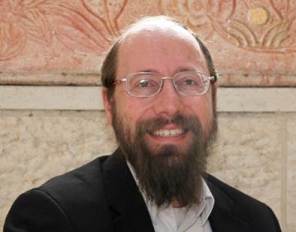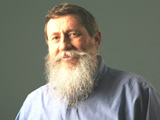Beit Midrash
- Family and Society
- Kashrut
- The Laws of Kashrut
"May I add dairy ingredients to bread that I intend to serve with a milchig meal on Shavuos?"
Question #2: No pareve bread in sight!
"Is one permitted to eat the local bread when everyone knows it is milchig?"
Answer:
Each of the above actual questions involves our understanding the prohibition created by Chazal against making bread containing either dairy or meat ingredients. In several places, the Gemara quotes a beraisa that prohibits using milk as an ingredient in dough, and states further that, if one added milk to dough, the bread produced is prohibited from being eaten at all, even as a cheese sandwich. This rabbinic injunction is because of concern that one might mistakenly eat the dairy bread together with meat. The Gemara rules the same regarding baking bread directly on an oven hearth that was greased with kosher beef fat – it is prohibited to eat this bread, even as part of a corned beef sandwich (Pesachim 30a, 36a; Bava Metzia 91a; Zevachim 95b). If one greased a hearth with beef fat, one must kasher it properly before one uses it to bake bread.
Is one ever permitted to make dairy or meaty bread?
The Gemara (Pesachim 36a) permits an exception – one may make dairy dough if it is ke’ein tora, "like a bull’s eye."
Bull’s eye
What does the Gemara mean when it permits dairy or meaty bread made like "a bull’s eye?" Does this mean that some bakers double as excellent sharpshooters?
We find a dispute among early Rishonim as to what the Gemara means when it says that one can prepare a dough like a bull’s eye. Rashi explains it to mean that it is the size of a bull’s eye -- one may bake a small amount of dairy or meaty bread that one would eat quickly. Since there will be no leftovers, we are not concerned that one may mistakenly use the dairy bread for a corned-beef sandwich or spread cream cheese on the fleishig bread.
Shapely bread
Other authorities explain that this refers to the shape of the dough. The Gemara means that if one shaped the dough like a bull’s eye or some other unusual shape, the heker (here, distinguishable appearance) accomplishes that no one will mistakenly eat it with meat or dairy (Rif, Chullin 38a in his pages; Rambam, Maachalos Asuros 9:22).
How do we rule?
Although these are clearly two different ways of explaining the Gemara, the authorities conclude that there is no dispute in halachah between these two approaches (Hagahos Shaarei Dura, quoted by Beis Yosef, Yoreh Deah 97; Shulchan Aruch ad loc.). In other words, although in general one may not make dairy or meat bread because of the above-mentioned concerns, one may prepare a small amount of dairy or meaty bread. One is also permitted to make dairy or meaty bread with an unusual shape.
All the bread is fleishig
The Maharit, one of the great halachic authorities of sixteenth-century Israel, discussed the following situation: A specific town was located at quite a distance from any source of vegetable oil. As a result, vegetable cooking oil was expensive, and the townspeople, therefore, used beef tallow for all their baking, cooking and frying. (Apparently, the local cardiologist felt that the populace had a cholesterol deficiency – no doubt because they observed the Mediterranean Diet.) Indeed, the people in town always treated their bread as fleishig, since they assumed that it always included beef fat as an ingredient. The Maharit first discussed whether this provided sufficient reason to permit consuming local bread in this town. Does the fact that all local residents know that their bread is fleishig preempt the takkanas chachamim prohibiting production of meaty bread?
Hometown advantage
The Maharit questioned whether this is sufficient reason to be lenient, since we still need to be concerned about visitors from out of town who are unaware that the local bread is fleishig. Indeed, some visitors had eaten local bread with cheese, not realizing that it contained a meat product. The Maharit concluded that local circumstances are insufficient grounds to permit fleishig bread – and that the local bread is permitted to be eaten only if it has a heker, or only if people make small quantities of bread (Shu’t Maharit 2:18). This means that commercially-made bread in this town would be made exclusively with unusual shapes.
However, a later authority disputed this conclusion of the Maharit. Rav Yonasan Eibeschutz, in his commentary on Shulchan Aruch Yoreh Deah (Kereisi 97:2), mentions that in his town and environs all the white bread was made with milk, and the accepted custom was to bake, purchase and use even large quantities of the bread without any heker. He notes that, according to the Maharit, this bread is prohibited, yet he concludes that, notwithstanding the Maharit’s opinion to the contrary, the bread is permitted, since everyone knows that the local bread is dairy and no baker in town produces pareve bread. He closes by mentioning that someone who is G-d fearing should not use the local dairy bread, although it is technically permitted.
Thus, whether one may permit milchig bread because all local bread is always milchig, or one may permit fleishig bread because all local bread is always fleishig is a dispute among prominent authorities.
Commercial bakery
A later authority, the Kesav Sofer, permitted a commercial bakery to produce milchig or fleishig bread, provided that the bakery sold only a small amount of bread to each customer. He contended that since the consumer only owns a small quantity of bread, we are not concerned how much the bakery actually produced.
Local bakery
In this context, I would like to share an anecdote. Many years ago, I was posed a question by a rav living in a small community that had no kosher bakery. He had the opportunity to provide a hechsher to a non-Jewish-owned bakery, which in his community would be very advantageous, since he would not need to be concerned about the bakery being open on Shabbos or on Pesach, or about hafrashas challah (all issues that I have discussed in other articles). The owner of the bakery was willing to meet all the ingredient requirements of the hechsher, and, in addition, was located within walking distance of the frum community, so that random inspections could take place even on Shabbos. The question germane to our topic was that the baker baked his white bread with milk, and the rav was uncertain whether and how to proceed with providing a hechsher to this bakery. According to the above-quoted Kesav Sofer, the rav could even provide a hechsher on the entire bakery, including the bread, and instruct people that they may purchase the milchig bread only in small quantities that would be eaten within a day.
However, according to the Maharit, the dairy bread should be treated as non-kosher. The rav’s decision was that the hechsher sign in the bakery would list which pastry items in the bakery are supervised as kosher/dairy, and which pastry and bread items are certified kosher/pareve, and that the sign would imply that the bakery sells breads that are not certified kosher because they are dairy. In this approach, he followed common custom not to rely on the Kesav Sofer’s leniency.
Are you in shape?
I mentioned above that one may make dairy or meat bread if it has an unusual shape. How unusual must the shape be?
As we can imagine, we are not the first to ask this question. In his above-mentioned responsum, the Maharit discusses what type of heker the halachah requires. He notes that there are two ways to explain what the heker accomplishes. One possibility is that the heker is so that people who know the bread is fleishig won’t forget and mistakenly eat it with cheese. The second possibility is that the heker is necessary so that people from outside the area, who are unfamiliar with the fact that the bread is fleishig, will stop and ask why is this bread different from all the other bread in the rest of the world. In other words, according to the second approach, the heker must be sufficient to draw people's attention to it, so that they ask why this bread looks so strange.
The Maharit subsequently demonstrates that this exact point, what is the reason for the heker, is the subject of a machlokes harishonim. The Tur explains that the reason for the heker is so that the person remembers that this bread is milchig or fleishig, meaning that he already knew that he has made milchig or fleishig bread, and the heker is so that he does not make a mistake and accidentally eat the milchig bread with meat or eat the fleishig bread with dairy. This type of reminder does not require a major heker that would cause someone to ask: "Why does this bread look so strange?"
This approach of the Tur is quoted by a later authority, when the Rama (in Toras Chatas 60:2) states that the heker is so that one does not forget that he made milchig or fleishig bread.
Why is this bread so different from all other breads?
On the other hand, the second approach is mentioned in even earlier sources. When discussing the heker necessary in making milchig or fleishig bread, the Rashba explains that the heker must attract attention, so that people will notice that the bread looks different. The heker will cause people to ask, before eating, why the bread’s appearance is so unusual (Rashba, Toras Habayis Hakatzar, 3:4, page 86b). Other later authorities, such as the Levush (Yoreh Deah, 97:1) and the Chachmas Adam (50:3) quote the Rashba’s approach. To quote the Chachmas Adam, "One may make dairy bread if one changed the shape of the bread significantly, enough that one would not eat meat with it."
Baked for sale
The Maharit notes that a difference in halachah results from this dispute between the Tur and the Rashba concerning whether an item with a minor heker can be sold. If the reason is so that people will ask, there would need to be a major heker. Otherwise, one would not be permitted to make the bread. If the reason for a heker is to remind people that this bread was made dairy, a minor heker will suffice, as long as these breads are not sold, since visitors will eat them as guests in the houses of people who will know to serve them only with fleishig meals.
Bread for Shavuos
In a different ruling, the Rama again demonstrates that the heker is so that someone not forget that the bread he made is dairy. The Rama rules that one may make challohs for Shavuos with dairy ingredients, since the challohs for Shavuos are shaped long whereas the regular Shabbos and Yom Tov challohs are round. According to the approach of the Rashba, this difference in shape would not suffice, since someone visiting would not ask why the challohs are shaped long, and would not notice anything unusual to attract his attention. However, according to the Tur, who holds that the heker is so that one not forget, this difference in shaping is sufficient.
We have thus learned some of the laws of producing dairy and meaty breads. Stay tuned for the continuation of this article soon, as we continue exploring this meaty topic!!
This Shiur is published also at Rabbi Kaganof's site

The Crisis of Unwashed Meat
Rabbi Yirmiyohu Kaganoff | Tevet 25 5780

Bishul Akum for the Ill
Rabbi Yirmiyohu Kaganoff | Cheshvan 13 5780

High in the Thigh
The Mitzvah of Gid Hano’she
Rabbi Yirmiyohu Kaganoff | Kislev 14 5779




















